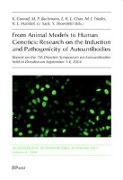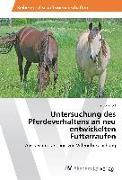From Animal Modesl to Human Genetics: Research on the Induction and Pathogenicity of Autoantibodies
BücherAngebote / Angebote:
The revolutionary techniques of modern molecular and cellular biology enhance almost daily our knowledge of immunity and autoimmunity in men and experimental animals. Our fragmentary puzzle of the immune system is going to form a fascinating picture of a master piece of evolution. Although many of these aspects were achieved by analysis of human body fluids and tissues, the etiopathogenesis of autoimmune diseases cannot readily be analyzed without appropriate animal models as shown in Chapter 1 and 3. Spontaneous and xenobiotic, idiotypic manipulation, and immunization induced autoimmune animal models as well as novel autoimmune knock-out and knock-in mice are used to investigate (i) the role in the pathogenesis of long-lived plasma cells, type I interferons, and mutations in genes encoding regulators of the cell cycle, (ii) the molecular mechanisms of xenobiotic autoimmunity, (iii) the break of tolerance via immunization with apoptotic material, (iv) immune mechanisms of autoimmune pregnancy loss as well as experimental APS, and (v) novel therapeutic approaches. This volume further deals with natural and pathogenic autoantibodies (Chapter 2), autoantibodies in systemic autoimmune diseases (Chapter 7), and the autoimmunity in neurological diseases. The role of B cells, autoantibodies and post-translational modifications in the pathogenesis of multiple sclerosis is discussed (Chapter 6). Some human SLE susceptibility genes identified by linkage studies e.g. at 1q23, a novel RA susceptibility gene encoding peptidylarginine deiminase type 4 as well as novel autoantibodies that target GW bodies, mitotic chromosomes, the spindle apparatus, hnRNPs, laminin-1, high mobility group box 1 protein, and the survival protein LEDGF/p75 are described in detail (Chapter 4, 5). Furthermore, the occurrence and measurement of therapy-induced antibodies (Chapter 8), guidelines and approaches to autoantibody testing and new technologies in autoantibody profiling, such as addressable laser bead immunoassays and autoantigen arrays are reviewed and discussed (Chapter 9).
Erscheint im August




